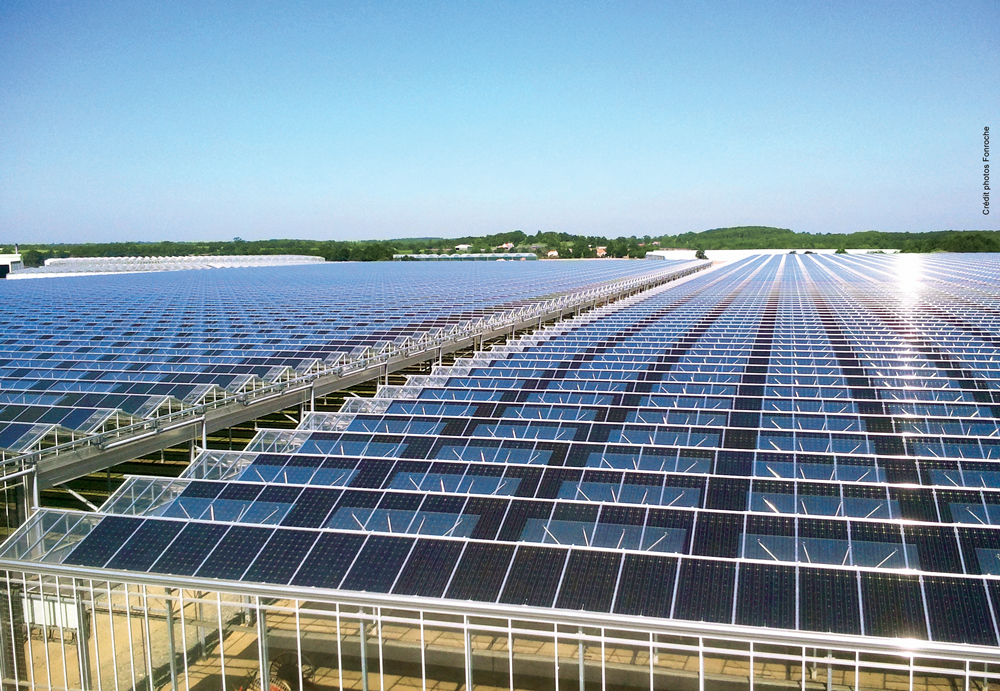“Thanks to @SebLecornu for launching the #PlaceAuSoleil initiative: it is essential that the state promotes the development of #solar in France. @Total wants to contribute significantly because we are ready to invest 10 GW of capacity within 10 years.”
🇫🇷☀ Merci à @SebLecornu pour le lancement de l’initiative #PlaceAuSoleil : il est essentiel que l’État favorise le développement du #solaire en France. @Total souhaite y contribuer de manière significative puisque nous sommes prêts à investir 10 GW de capacité d’ici 10 ans. pic.twitter.com/RFpkqMIJ9F
— Patrick Pouyanné (@PPouyanne) June 28, 2018
https://platform.twitter.com/widgets.js
With this tweet, the CEO of French oil and energy company Total, Patrick Pouyanné has confirmed what has announced yesterday during the presentation of the #PlaceAuSoleil initiative, which is another plan of the French Ministry of Ecological and Solidary Transition to improve the current regulatory framework for solar energy and boost its development.
More details on how Total’s plan will be implemented were not provided. Several other announcements, however, were made during the event: EDF’s CEO, Jean-Bernard Levy reiterated that the company will implement its 30 GW plan to “help France reduce its gap in terms of PV development;” French retail groups Auchan and Carrefour have promised to install 60 hectares, 20 hectares of solar panels, respectively, at their facilities in the country, while two more retailers, Magasins U and Les Mosquetaires, have committed to 50 hectares each.
Popular content
Another big announcement came from France Ministry of Defence, which said it will make around 2,000 hectares of surfaces available for solar projects that will have to be realized by 2025. In early May, on the other hand, pv magazine had anticipated that the French administration was considering building solar park on its own premises.
The French Secretary of State at the Ministry of Ecological and Solidary Transition, Sébastien Lecornu has explained that the #PlaceAuSoleil plan includes a package of 30 measures that are intended to, among other things: create the conditions for making surfaces available for the construction of ground-mounted solar parks; define an economic model profitable for investors; improve the social acceptance of large-scale projects; streamline the bureaucratic burden and the time frame of approval process; acceleration of the tenders for PV; improve the framework for installing solar systems on carports and greenhouses; support self-consumption; double volume of tenders for PV projects on agricultural land; and increase by 50% the volume of tenders for rooftop PV.
These new measures are adding to those already implemented by the French Minister of Ecological and Solidary Transition, Nicolas Hulot at the end of last year, when the annual capacity to be allocated through the series of solar tenders launched by the French government in late 2016 was increased from 1.45 GW to 2.45 GW. Through these efforts, the Macron administration is seeking to make the 2023 solar target of 20 GW achievable.
At the end of the first quarter of this year, the country’s cumulative installed PV capacity stood at around 8.3 GW. An acceleration in new deployments, however, was registered during the last quarter of 2017 and first quarter 2018, when new additions reached around 650 MW, a signal the series of tenders launched by the French government in the second half of 2016 are beginning to bear fruit.
This content is protected by copyright and may not be reused. If you want to cooperate with us and would like to reuse some of our content, please contact: editors@pv-magazine.com.



I would like to see France build a solar updraft up slope power tower on a steep mountain slope somewhere. Many such places are available and solar cells could be installed under the greenhouse roof.
The big advantage is that people could live, work and grow food inside the greenhouse while it was producing power.
I have suggested this to the French government.